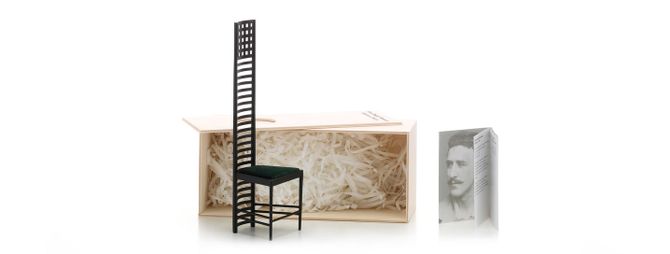
Miniatures Collection - Hill House 1
Charles Rennie Mackintosh, 1903
Hill House 1 marks a new phase in the work of Mackintosh. The chair´s strict geometry recalls the Ladderback Chairs of the Shakers and clearly differs from the organic or feminine forms of early designs. It was made for the house of a Scottish publisher and his wife and functioned more as part of an artistic environment than as a piece of furniture for everyday use. The chair was assigned a set place in the bedroom of the couple, where it fulfilled a purely decorative function. The extended back, first used by Mackintosh in 1897, is a motif that appears repeatedly in his chairs and gives them an unmistakable quality.
Miniatures Collection
Da oltre due decenni il Vitra Design Museum realizza repliche in miniatura dei pezzi più importanti della propria collezione di mobili di design. La Miniatures Collection riassume l'intera storia del mobile industriale di design, spaziando da Storicismo e Art Nouveau a Bauhaus e Nuova Oggettività, da Radical Design e Postmodernismo fino ai giorni nostri. Misuranti esattamente un sesto rispetto alle dimensioni degli storici originali, le sedie sono tutte perfettamente in scala e ricreano con precisione i più minuscoli dettagli di costruzione, materiale e colore. Gli elevati standard di autenticità comprendono addirittura le venature naturali del legno, la riproduzione delle viti e la replica delle elaborate tecniche artigianali. Tutto questo ha reso le miniature apprezzati oggetti per collezionisti e ottimi strumenti didattici per università, scuole di design e studi di architetti.